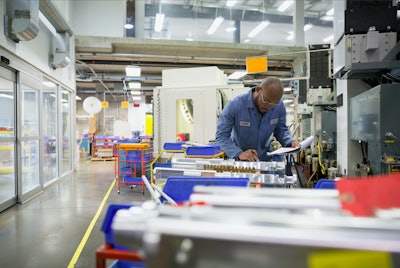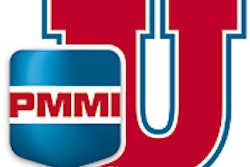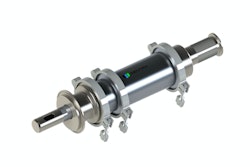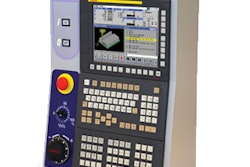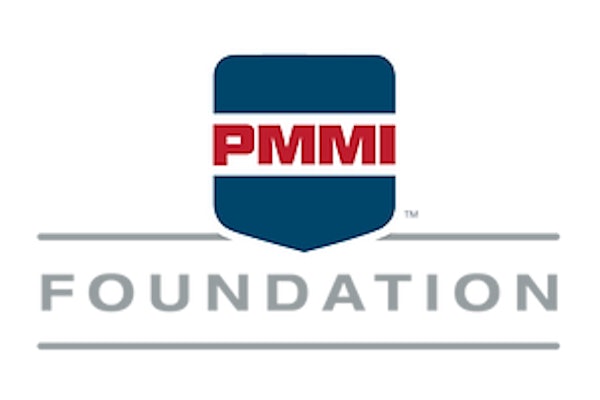Skilled manufacturing workers are hard to find today, and the odds of finding them are only projected to decrease in the next decade. Employee turnover is also at an all-time high, says Jeff Kortes, a manufacturing industry veteran and recruiter who has spent the last 25 years working with companies like ConAgra, Midas International, and Chrysler to help them retain their skilled workforces.
In 2015, the manufacturing industry saw a national turnover rate of 24.63 percent. That is significantly higher than the 15 to 18 percent average rates seen throughout the past decade, according to employment tracking and consumer credit reporting firms like Equifax and Compensation Force.
Kortes says the way manufacturing companies treat their employees and handle company culture is one of the biggest reasons why the industry is seeing high turnover rates. But he says he may have found a solution.
“I talk about simple recruiting strategies that are not complex, but they are hard to do because managers have to be consistent in their efforts regardless of their heavy workloads,” Kortes says. “We aren’t focused enough. I came out of manufacturing, and I have learned that manufacturers love processes. If you have a process and you follow it, you remove all of the variables and the likelihood of success increases significantly.”
So Kortes created a process facetiously called C.R.A.P. The acronym stands for caring, respect, appreciation, and praise, a term he coined while on his way to do an intervention with a large Detroit-based manufacturer. Throughout Kortes’ career, he has found that manufacturing employers don’t give their employees enough care, respect, appreciation, or praise, and it is driving hard-to-come-by talent away.
While Kortes meets with top manufacturing companies one-on-one to coach them on employee retention and company culture, he shared his most coveted tips with PP-OEM.
The first part of C.R.A.P. deals with caring for employees. Kortes says employers need to be there for their employees when they have work-related issues, and he warns against the backlash of not being available.
“I am a huge advocate of employee assistance programs and when someone walks into your office and says, ‘Hey, do you have a minute, I have a problem,’ you need to be there for them,” Kortes says. “We are always too busy, and we tell our employees, ‘I’m sorry, can you come back?’ But your workers are like kids, when they need you, they need you. If you blow them off a couple of times, they won’t come back, and they won’t talk to you.”
If employees’ needs and issues aren’t being addressed, Kortes says word can spread that a company doesn’t take time to hear out its employees. On the other hand, if an employee is confident that their boss will make time for them, employees share that with their coworkers, and this can create a thriving work environment where discussion and feedback is welcome.
Another integral part of employee retention is respect. Kortes urges bosses not to micromanage their workers as it could throw a wrench into the overall office morale and culture.
“Micromanaging sends the message that you don’t trust your employees or their abilities, and people don’t want to work for someone who doesn’t trust them,” he says.
Respecting workers also goes hand-in-hand with the first principle, caring for employees. When workers stop by their manager’s office, not only do managers need to make time for them, but they also need to listen, Kortes says.
“People know when you are not listening. It’s intuitive and it’s a sign of disrespect,” Kortes says. “The thing I have noticed with millennials—but it also applies to everyone—is when you ask them for their ideas on a project, and you think you have all the answers because you are the manager, but instead you say what are your thoughts? It’s powerful.”
The third key to employee retention is showing appreciation, and Kortes says employers aren’t currently providing enough of it.
“We tend to look for people who are doing something wrong, but if your employee finishes assembling a component on a piece of equipment, and you see the assembly is just right, do you say something to the individual?”
Providing teams or individuals with positive affirmations for a job well done encourages other managers and employees to do the same with their peers. But managers have a tricky balance to strike when it comes to praising their employees, which is the fourth and final part of this process.
“One of the problems we have gotten into with Millennials is that we praise them for anything and everything,” Kortes says. “We have made a big mistake in that because praise should only be given when they deserve it. When an employee hits it out of the park, you need to make a big deal out of it. You need to highlight how it affected the department and company. It needs to be more than just a positive affirmation.”
Although recruiting and retaining employees are two separate efforts, Kortes says employers need to focus on retaining employees to secure their future workforce while adding in the talent they recruit.
“A decade from now, the numbers are on a collision course when it comes to recruiting a skilled workforce,” Kortes says. “Even if you forget the other fundamentals of employee retention, if you give them C.R.A.P., the return on employee retention you will have is huge.”
To learn more about Kortes’ training sessions and programs, visit: jeffkortes.com
